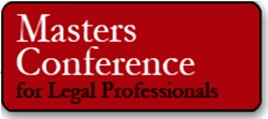Dropped Cell Phone Does Not Lead to Spoliation Sanctions Under Amended Rule 37(e): eDiscovery Case Law
In Shaffer v. Gaither, No. 14-00106 (W.D. N.C., Sept. 1, 2016), North Carolina District Judge Max O. Cogburn, Jr. ruled that the sanction of dismissal requested by the defendant for the plaintiff’s lost text messages was disproportionate and denied the defendant’s Motion for Sanctions.
Case Background
The defendant filed an instant motion for dismissal based on destruction of electronically stored information (“ESI”). The plaintiff contended that she was constructively discharged when she quit her job as an Assistant District Attorney due to sexual harassment by defendant and also claimed that defendant defamed her by telling others that she was fired for having a sexual relationship with a married member of the defense bar (which she admitted, but also contended was a falsely given reason for her termination).
The defendant contended that the text messages were lost in May 2014 when plaintiff dropped the cell phone in a bathroom and lost her text messages (a fact which the plaintiff did not deny) and that at the time the phone was destroyed, plaintiff and her counsel knew of the impending litigation, having threatened litigation in a letter nearly a year earlier, and that litigation was in fact filed the month following the phone’s destruction. In arguing against dismissal, the plaintiff claimed that these texts were not relevant as the defendant did not read them until sometime after he decided to fire plaintiff (which he admitted, but claimed that his decision to fire the plaintiff came after the paramour’s spouse told him about the texts and the alleged affair).
In her affidavit, the plaintiff indicated that she no longer had the phone or the SIM card because when she broke her phone, she made a claim against her insurance, and her insurer required her to turn in both the broken phone and the SIM card (and the texts were not available from the provider).
Judge’s Ruling
In considering the defendant’s motion for dismissal, Judge Cogburn stated that “[u]nder recently revised Rule 37(e), the duty of a party to preserve ESI arises when litigation is ‘reasonably anticipated’ and the loss of ESI is sanctionable when ‘reasonable steps to preserve’ are not taken and such information cannot be restored or replaced through additional discovery.” However, he also noted that the “sanction of dismissal is not, however, a sanction of first resort” with Rule 37(e)(1) and Rule 37(e)(2) allowing the court “to take action no greater than necessary to cure the prejudice resulting from the loss” and that “Rule 37(e)(2) allows treatment of loss under spoliation only where party acted with an intent to deprive.”
While determining that “plaintiff and her counsel failed to take reasonable steps to preserve those texts as they apparently resided only on plaintiff’s phone”, Judge Cogburn said he “cannot conclude that plaintiff acted with an intent to deprive defendant of the ESI under Rule 37(e)(2); thus, spoliation does not yet come into play.” However, noting that testimony could determine the content of those texts, Judge Cogburn indicated that the court “has not ruled out a spoliation or modified spoliation instruction, and reserved that for consideration after it has heard the evidence at trial.”
So, what do you think? Would a dismissal sanction have been granted under the old rules? Please share any comments you might have or if you’d like to know more about a particular topic.
Disclaimer: The views represented herein are exclusively the views of the author, and do not necessarily represent the views held by CloudNine. eDiscovery Daily is made available by CloudNine solely for educational purposes to provide general information about general eDiscovery principles and not to provide specific legal advice applicable to any particular circumstance. eDiscovery Daily should not be used as a substitute for competent legal advice from a lawyer you have retained and who has agreed to represent you.








